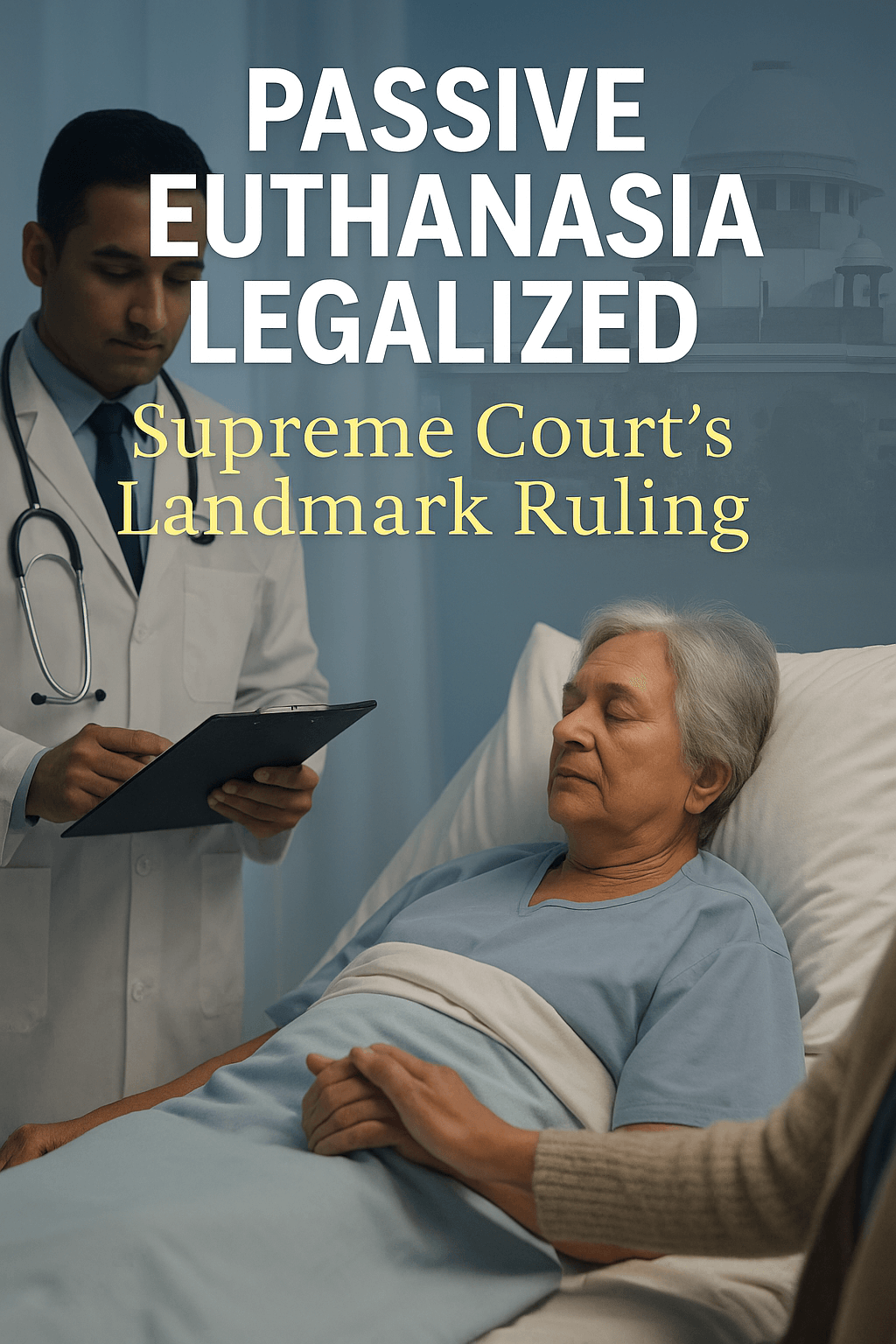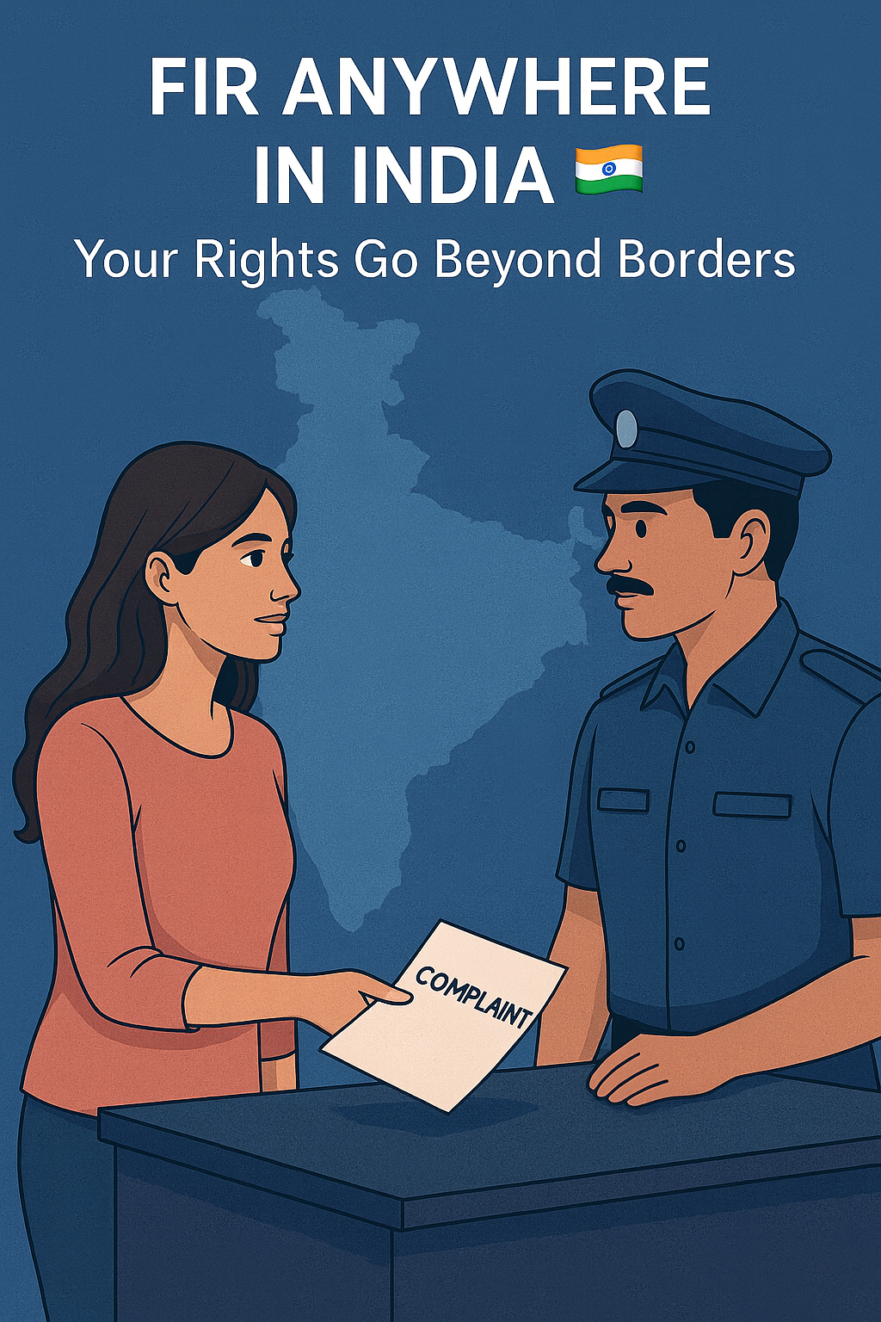
⚖️ Passive Euthanasia Legalized: Right to Die with Dignity in India 🕊️
In a landmark decision, the Supreme Court of India recognized the Right to Die with Dignity as part of the Right to Life under Article 21 of the Constitution.
This judgment legalized passive euthanasia, allowing individuals to refuse life-sustaining treatment under specific circumstances.
This ruling marks a historic moment in India’s legal and ethical journey — balancing compassion with constitutional principles.
💡 What Is Passive Euthanasia?
Euthanasia refers to intentionally ending a person’s life to relieve suffering. There are two types:
- Active Euthanasia: Direct action to end life (for example, administering lethal medication).
Still illegal in India. - Passive Euthanasia: Withdrawing or withholding medical treatment that keeps a person alive artificially.
Now legally permitted under strict safeguards.
In simple terms, passive euthanasia allows a patient to decline further medical intervention when recovery is impossible and suffering is immense.
🏛️ Legal Background
The journey of euthanasia laws in India began decades ago.
In Aruna Shanbaug v. Union of India (2011), the Supreme Court first recognized the idea of passive euthanasia under limited conditions.
The definitive ruling came later in Common Cause v. Union of India (2018), where the Court:
- Declared that Right to Die with Dignity is a part of Article 21 – Right to Life
- Legalized Passive Euthanasia
- Allowed individuals to make a Living Will
📜 What Is a Living Will?
A Living Will is a written declaration made by a person while in a sound state of mind, specifying that:
- No life-sustaining treatment should be given when recovery is medically impossible
- Their wishes regarding medical intervention must be respected
It empowers individuals to make end-of-life choices — a profound recognition of human dignity and autonomy.
⚖️ Supreme Court’s 2023 Update
In January 2023, the Supreme Court simplified the procedure for implementing passive euthanasia and living wills.
The new guidelines made the process:
- 🩺 More practical for hospitals and families
- 📄 Less bureaucratic and time-consuming
- 👪 Centered on the patient’s choice and medical ethics
Now, families can approach the hospital medical board directly, without requiring approval from a magistrate in every case.
🚨 Safeguards & Conditions
To prevent misuse, the Supreme Court laid down strict safeguards for passive euthanasia:
- A medical board must confirm that the patient’s condition is irreversible
- The Living Will must be made voluntarily and in writing
- Family members or legal guardians must consent to withdrawal of treatment
- Every step must be properly documented and witnessed
🕊️ Why This Ruling Matters
The ruling reflects a major evolution in India’s understanding of individual liberty and dignity.
It acknowledges that the Right to Life also includes the Right to Die with Dignity — allowing a person to make autonomous, humane choices in their final days.
“Life is precious, but it must be lived with dignity.
The same dignity must follow a person in death.”
— Supreme Court of India
🏛️ About Delhi Law Academy
At Delhi Law Academy, we simplify complex legal judgments and concepts into clear, student-friendly insights.
Our mission is to spread legal awareness and inspire future judges and lawyers to understand the human side of law.
📘 Free Study Material for Law Students!
Download our FREE study material prepared by Delhi Law Academy’s expert faculty.
💬 Frequently Asked Questions on Passive Euthanasia in India
It is permitted when recovery is impossible, and the patient or their family wishes to avoid unnecessary suffering.
Unlike active euthanasia, no direct action is taken to cause death.
The Supreme Court’s 2018 judgment in Common Cause v. Union of India recognized the Right to Die with Dignity under Article 21.
Active euthanasia — where a deliberate act causes death — remains illegal.
It guides doctors and families to respect the patient’s choice and dignity.
The Court legalized passive euthanasia and allowed people to prepare Living Wills with proper safeguards and medical board oversight.
– A medical board must confirm the patient’s irreversible condition.
– The Living Will must be voluntary, written, and witnessed.
– Family members and doctors must document every step.
– The process should always respect medical ethics and patient dignity.
It removed the need for a magistrate’s approval in every case and allowed families to approach a hospital medical board directly.
This made the procedure faster and more humane while keeping necessary safeguards in place.
Contact us
📍 Delhi Law Academy – Jaipur Branch
6C, Tower 2, Coaching Hub, Pratap Nagar, Jaipur – 302033
📞 Phone:
+91 9911916552
+91 8447285606
✉️ Email:
contactus@delhilawacademy.com

